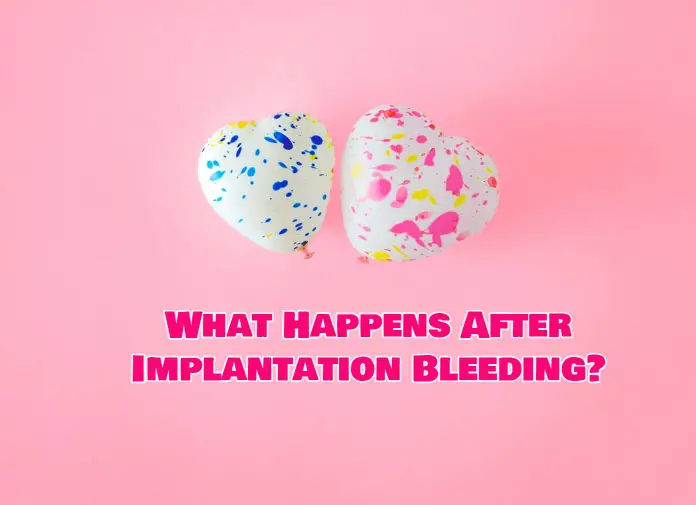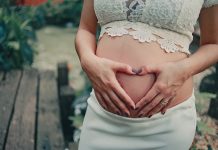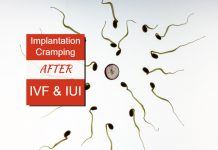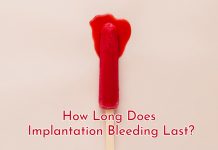What happens after implantation bleeding? Soon after implantation, the placenta formation begins. Germ layers that will form the different organs start differentiating. Production of progesterone shifts from cyst to the placenta. The Human Chorionic Gonadotrophin (hCG) starts doubling every 48 hours.
Implantation leads to pregnancy, and it is the first confirmation. The significance of implantation is for nutrition and the establishment of a connection between mother and embryo. But this is just the beginning of the process. What happens after implantation bleeding?
After implantation bleeding, the embryo growth or baby’s development begins. Nutrients and oxygen are actively exchanged between mother and baby.
The baby’s waste also starts transporting out through the mother’s blood. But all this happens inside your body and cannot be seen for a long time.
The first ultrasound that allows you to see your baby is after six weeks of pregnancy. Externally after implantation, you start seeing early pregnancy signs.
These are the symptoms that you hear from your mother and aunts.
Fertilization and ovulation
A woman is born with two ovaries which have a fixed repertoire of eggs. All eggs undergo maturation solely after puberty.
One egg matures every month and forms the Grafian follicle. This follicle ruptures and releases a secondary oocyte.
Until the fusion of sperm with the oocyte, it cannot divide. The cellular apparatus for cell division is absent in human oocyte.
After the sperm fuses with the secondary oocyte, it becomes an ovum or egg. Every month the ovary releases a secondary oocyte after maturation.
Ovulation is the monthly release of secondary oocyte on the 14th day of the cycle. A female is most fertile from 3 days before ovulation until 24 hours after that.
An egg can only live for 24 hours. If sperms are not present, then the egg becomes non-viable, and the luteal phase of the menstrual cycle begins.
The luteal phase is when the lining of the uterus remains intact due to progesterone from egg coating. Later the egg and the endometrial lining both come out as menses.
Sperms have a life of 5-6 days inside the vagina. The vagina had acidic pH and sperms are not used to low pH.
Secretions from male glands make the vagina slightly alkaline. Most contraceptives work on this pattern by changing alkaline pH to acidic.
After coming into the vagina near the cervix, the movement of vagina and tubes takes sperms inside.
Later they use their tails to move inside to reach the egg. A process of Capacitation lasting for 5-6 hours makes the sperms capable of moving inside the vagina.
Out of millions of sperms, few reach the ovulation site, and only one fertilizes the egg. If sperms are present at the time of ovulation, then one of them manages to enter the egg.
After this, the membrane of egg hardens. This prevents polyspermy, entry of more than one sperm. The fusion of oocyte and sperm to form a zygote is fertilization.
Many reactions take place to recognize whether the sperm has any defects. If there is any abnormality, then the mother’s body tries to abort the process.

What happens during implantation?
After fertilization, the egg receives an apparatus for cell division. Now the zygote is capable of dividing and developing into an embryo. The zygote’s membrane called Zona Pellucida recognizes the site for implantation.
The zygote after thirty hours from fertilization undergoes the first division. The division of zygote into smaller units called blastomeres is cleavage. It happens in the upper part of the fallopian tubes.
During the process of cleavage, the dividing zygote moves down the tubes to reach the uterus. After 10 hours from the first cleavage, the second cleavage takes place.
After three days from fertilization, the third cleavage takes place. The zygote forms a mulberry structure called morula.
It further divides to form a 64 celled structure called blastocyst. This small bunch of cells lies near the endometrial lining on the sixth day after fertilization.
On the seventh day after fertilization implantation occurs. The trophoblast processes penetrate the lining, and the secretions make it soft.
The blastocyst implants in the endometrial lining. This causes some narrow capillaries to break and bleed. Implantation bleeding is the result of egg embedment.
Symptoms of implantation
Implantation symptoms are not very distinct and may vary greatly from individual to individual. Some women may have the feeling of pulling and twisting in their lower stomach.
Signs and symptoms of implantation:
1) Spotting
The blood that comes from endometrial lining during implantation doesn’t come out immediately. Time taken for traveling down the uterus makes the blood brown. The amount of blood is very meager and only leads to spottingSpotting During Pregnancy.
2) Implantation cramps
The pulling in the lower abdomen feels like cramping. But they will not be painful as menstrual cramps. If the cramping is excess, then the woman may have a tubal pregnancy. The blastocyst doesn’t travel down and implants in the wrong place causing Ectopic pregnancy.
3) Fatigue
Every pregnancy process requires a lot of energy. First weeks of pregnancy are most energy intensive. Fatigue during implantation will not be very evident. You might not feel inactive but low on energy.
4) Nausea
Another common thing woman recall about implantation symptoms is nausea. The hormones change after implantation. This causes nausea and vomiting. You might throw up once or twice. After that, the symptoms of implantation will subside.
What happens after implantation bleeding?
After implantation, the embryonic layers start developing. If implantation occurs then a portion of the lining undergoes modification to become Decidua. This comes off when the fetus delivers. Decidua is Latin for falling off.
The blastocyst forms a cavity inside it with a cell mass. The outer layer is the trophoblast or trophectoderm. The inner cell mass is the precursor of the embryo or the baby. The side of trophoblast from which implantation happens is the animal pole.
The cells of the trophoblast or the outer layer of embryo help to provide nourishment to the embryo. The cells of trophoblast form the extraembryonic membranes namely chorion and amnion, parts of the placenta.
In the region of contact between blastocyst and endometrium, the trophoblast forms two layers.
After implantation, the blastocyst sinks into the endometrial lining and forms villi like processes. They help to derive nutrition for growing embryo. The inner cell mass forms a flat disc called embryonic disc.
The trophoblast cells start producing the hCG hormone. This hormone in a way takes the function of LH hormone. It maintains the corpus luteum and increases the secretion of progesterone.
Progesterone maintains the endometrial lining of the uterus and causes it to grow throughout pregnancy.
It also increases the secretion of cervical mucus and forms a protective plug called Mucus plug during pregnancy. Progesterone also prevents menstruation.
Early signs of pregnancy
After implantation, early signs of pregnancy start showing. The presence of hCG in the urine of a pregnant woman confirms her pregnancy.
A positive pregnancy test after implantation is the first test. Morning sickness begins soon after implantation.
Frequent urge to pee and constipation are problems due to rising progesterone and other hormones. Bloating and flatulence are painful early pregnancy signs.
Tenderness of breasts makes you feel queasy whenever you touch them. They feel like bags filled with water.
Cramping and spotting are common during early pregnancy. The amount of cervical mucus starts increasing after implantation.
The mucus plug forms to protect the baby. Nasal congestion is a common symptom after implantation. Cravings and aversions will continue to fluctuate throughout pregnancy.
During implantation, it is essential to be positive and patient. After implantation, you need to raise your tolerance limit for the next nine months.
Staying away from anxiety and stress during and after implantation is essential for a healthy pregnancy.
You need to cut down caffeine and other stimulating drugs after implantation. Eating healthy is essential during pregnancy.




![Implantation Bleeding With Twins [How long does IB last with twins?] Implantation Bleeding With Twins](https://www.pregnanteve.com/wp-content/uploads/2019/01/implantation-bleeding-with-twins-218x150.jpg)




